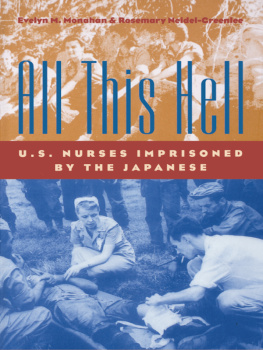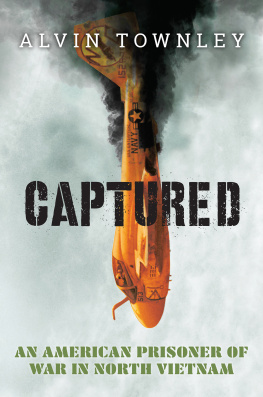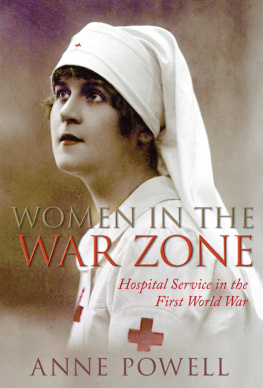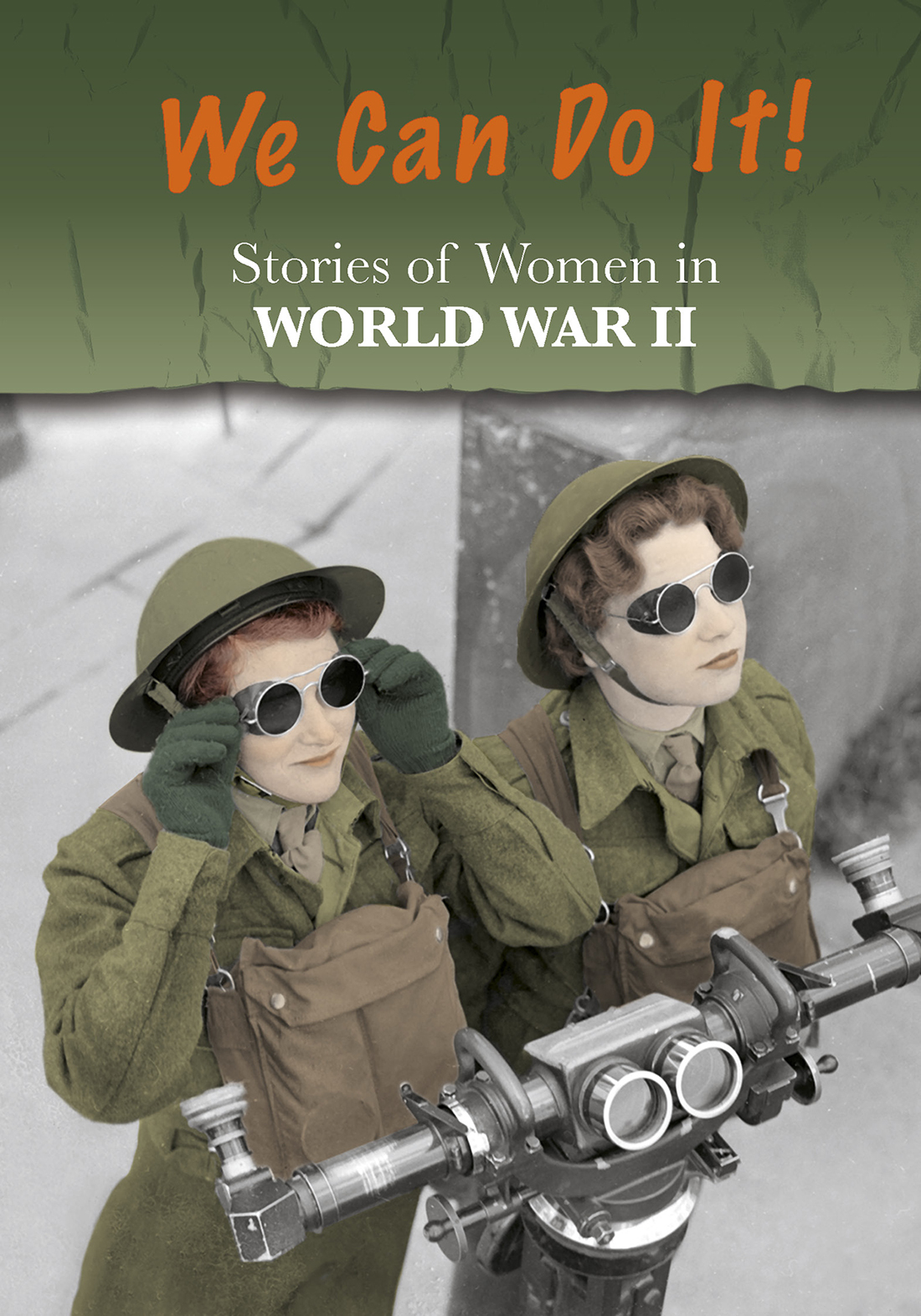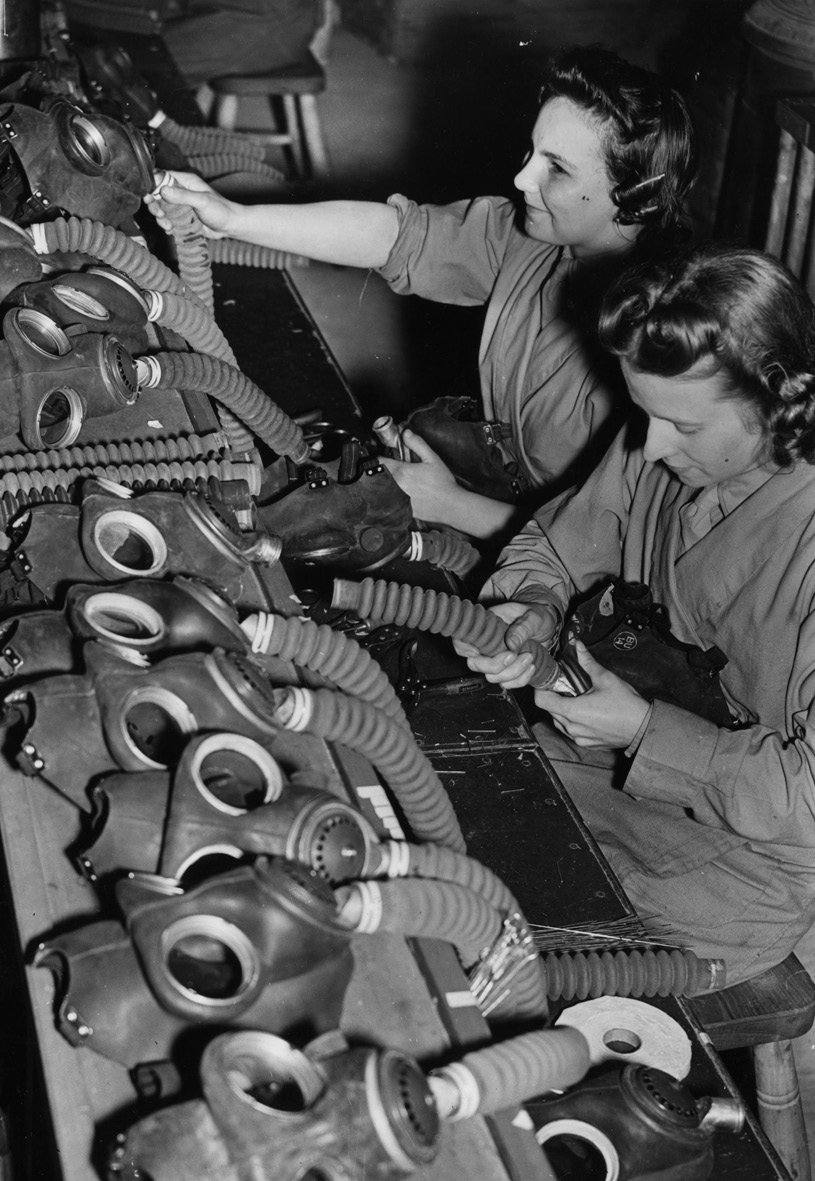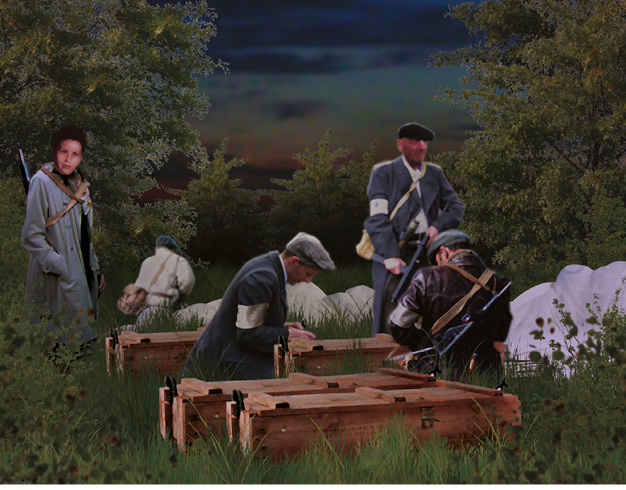Introduction
In September 1939, German troops invaded Poland. Soon afterward, the United Kingdom and France declared war on Germany. World War II had begun. The fighting spread across the globe, drawing in many other nations, including the Soviet Union and the United States (as allies of the United Kingdom and France), and Italy and Japan (on the German side). More than 75 million people fought in the warnearly all of them men.
This left a huge gap in the . Who was going to produce the weapons and food and do many other important jobs? The answer was women. Millions took on work that they had rarely done before, such as operating factory machines, driving ambulances, fighting fires, flying bombers, plowing fields, and cracking codes. A few became famous names. This book tells the true stories of four of these women.
Anne-Marie Walters: Secret Agent
Anne-Marie Walters worked behind enemy lines in France. For seven months during World War II, she was a messenger for groups, which were fighting back in secret against the occupying Germans. Anne-Marie was in constant danger of being captured, but her courage and quick thinking helped her survive.
Anne-Marie was born in 1923. Her father was English and her mother was French. The Walters family lived in the city of Geneva, Switzerland. Life there was good. The family went skiing in the winter and spent summer vacations on the sunny beaches of the south of France. Anne-Marie grew up speaking both English and French.
This happy period ended with the outbreak of World War II. In May 1940, as German forces prepared to invade France, the family left Switzerland and moved to the United Kingdom. Anne-Marie was determined to be a part of the struggle against the Nazis. Though her mother tried to stop her, she joined the Womens Auxiliary Air Force (WAAF) in 1941. This all-female service took on many of the daily jobs in Britains Royal Air Force, leaving the men free to fight on the front line.
Anne-Marie began work near London as a plotter, tracking the positions of enemy aircraft over the United Kingdom. Little did she know that she would soon be heading for the front line herself. In July 1943, Anne-Marie was asked to join the Special Operations Executive (SOE). This top-secret band of men and women helped organize Resistance groups in countries occupied by the Germans.
The groups gathered important information about the German forces, which was sent back to London. They also caused as much damage as they could, including wrecking railroads and weapons factories and arranging escape routes for airmen who were shot down. To support them, British planes dropped supplies of arms, radio equipment, money, and other essential items into France.
Why was Anne-Marie invited to join a secret and very dangerous organization like the SOE? For a start, she could speak French perfectly. The Germans would think she was just another French citizen. The other reason was that she was a woman. Men were much more likely to be stopped and questioned than women. Anne-Marie was one of about 50 brave women sent as secret agents from the United Kingdom to France.
SOE recruits had to be examined to make sure they were suited to this daring and dangerous life. Over four days, they were given a series of exercises that tested their bravery and intelligence. Many failed these tests, but not Anne-Marie. Her report said that she had ample courage, determination and a sense of humor.
After this, Anne-Marie went to a special training school in Scotland. Here she learned how to find her way across unknown country and how to send messages by radio or . She was also taught how to use weapons and ammunitions, as well as how to fight with her bare hands. Later on, Anne-Marie was sent for parachute training. Now all she had to do was wait for the order to go into action.
At last, on December 16, 1943, the call came. Anne-Marie was to parachute into southwest France with another agent. That night, they boarded the aircraft and took off. But it was too foggy to see clearly, and they were forced to turn back. The plane crash-landed, killing four members of the crew.
They made another attempt on January 3, 1944. This time it was a bright, moonlit night. Anne-Marie jumped out of the aircraft, but at first her parachute would not open properly. She tugged and kicked until it was fully open, then floated down into a marshy field.
She later wrote:
There, under my hand lay the soil of France, soft and friendly.
Suddenly, Anne-Marie heard voices nearby. She crouched down in terror. Then she realized they were French voices, so she got up and waved. Members of the Resistance had come to welcome her. Soon, she was safe and warm in a local farmhouse.
The next day, Anne-Marie was driven to a town in the Gascon region of France. As she walked through the streets, she felt very nervous. She thought everyone was looking at her and knew she was a British agent, though of course, they didnt. She told herself she was alone and would have to take care of herself. Anne-Marie was just 20 years old.
That afternoon, she met her commanding officer for the first time. George Starr was a short, bald, and nervous man known as Le Patron, or the Boss. He was in charge of a huge network of Resistance groups in southwest France and was one of the most successful of all SOE agents.
Starr arranged for Anne-Marie to live at a remote farm in Gascony. She had a new identity as a student from Paris. She even had a new namePaulette. At the farm, Anne-Marie was looked after by Odilla and Henri Castagnos. She became part of their family, enjoying huge meals, a warm bed, and security. The farmhouse would be a trusty refuge in the terrifying months to come.
By this time, the war was turning in favor of the Allies. They had begun pushing German and Italian forces out of their conquered territories. The next big event was to be a huge Allied invasion of France due sometime in 1944. The task of the SOE was to help the French Resistance prepare its own uprising once the invasion had started. This meant gathering guns and ammunitions and planning strikes against the Nazis.
Anne-Maries main job was to carry messages, money, and important papers between the various groups in the network. She had a huge area to cover. It stretched for over 200 miles (320 kilometers), from the Dordogne region down to the Pyrenees on the Spanish border. She traveled by bicycle, bus, and train and even learned to drive vehicles called gazos. These were powered by charcoal, since only Germans were allowed to have gasoline.
On her travels, Anne-Marie met all sorts of people. She soon learned whom to fear. German soldiers were easy to spot because of their uniforms. Members of the Gestapothe dreaded Nazi secret policewere dressed in suits and gray raincoats. Many had close-cropped hair and wore dark glasses. Some French people worked for the German occupiers and were happy to betray their fellow countrymen.










